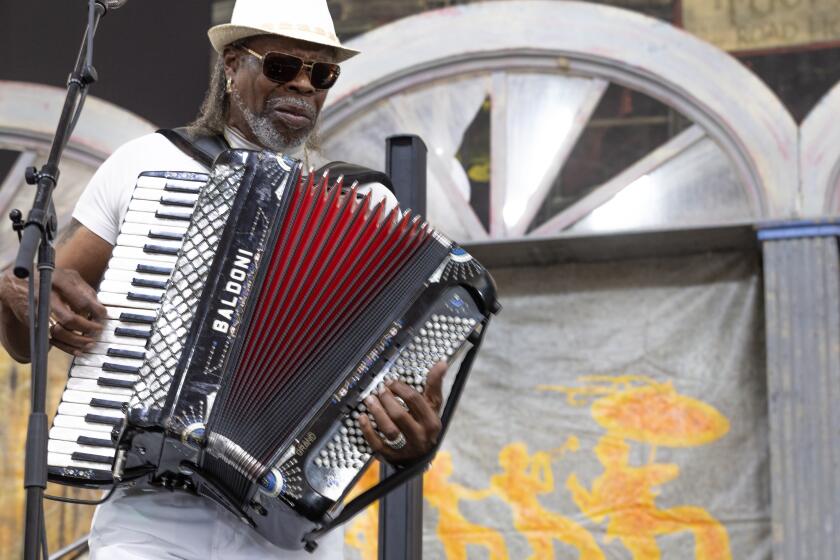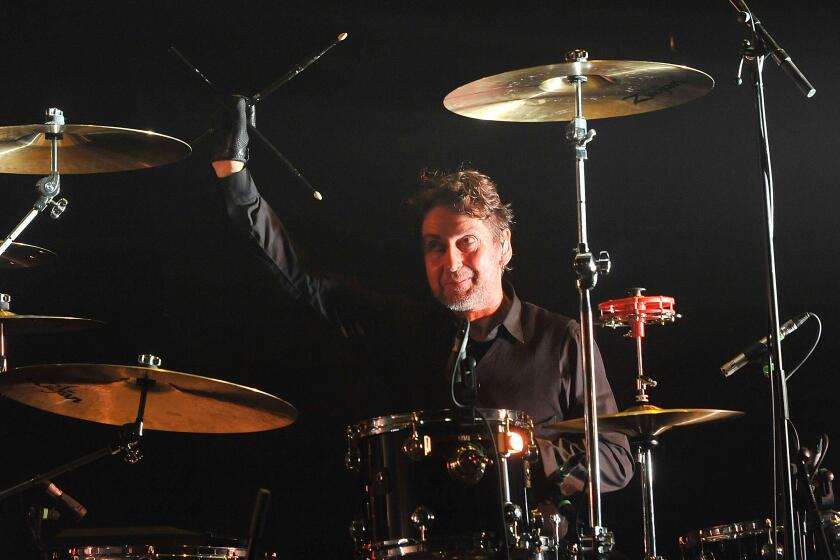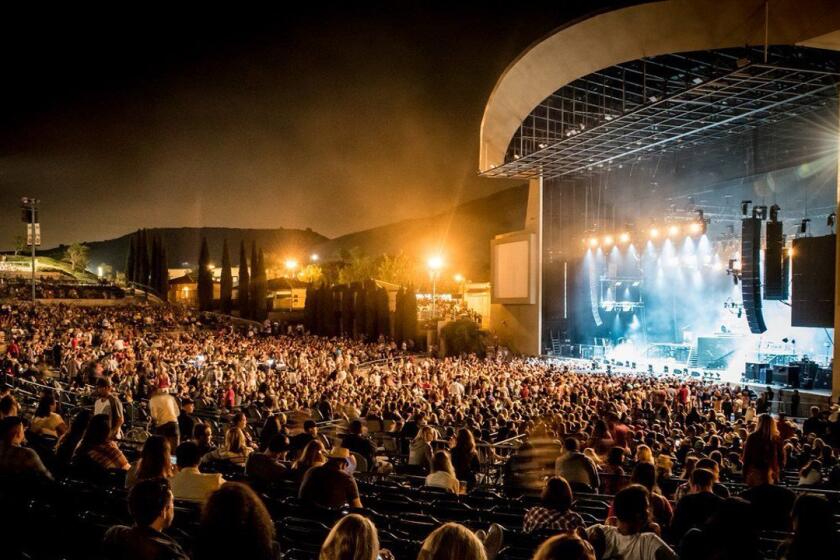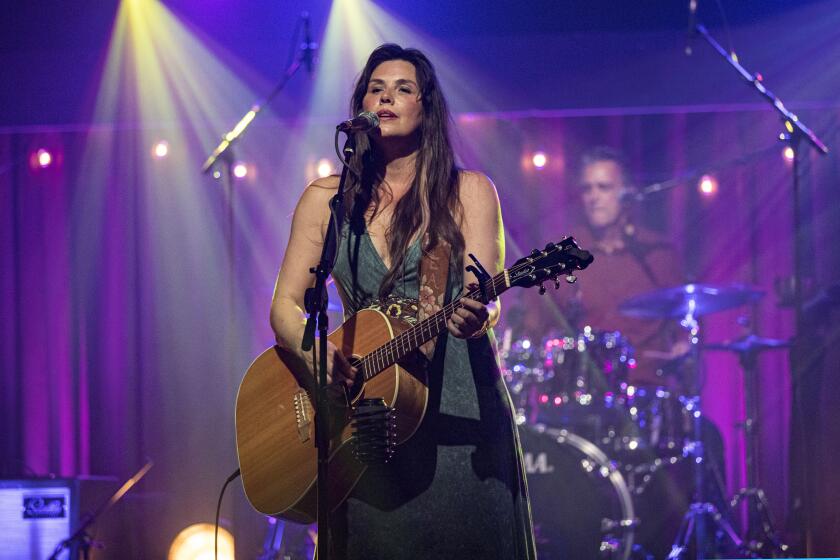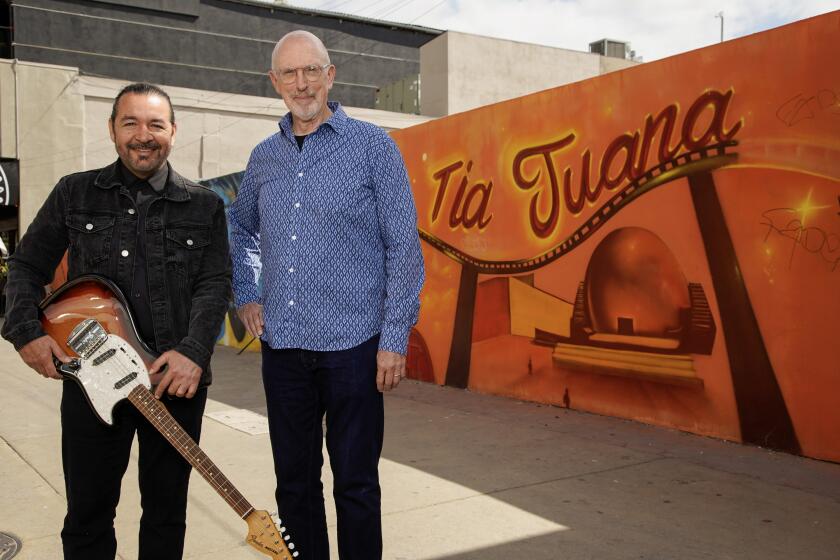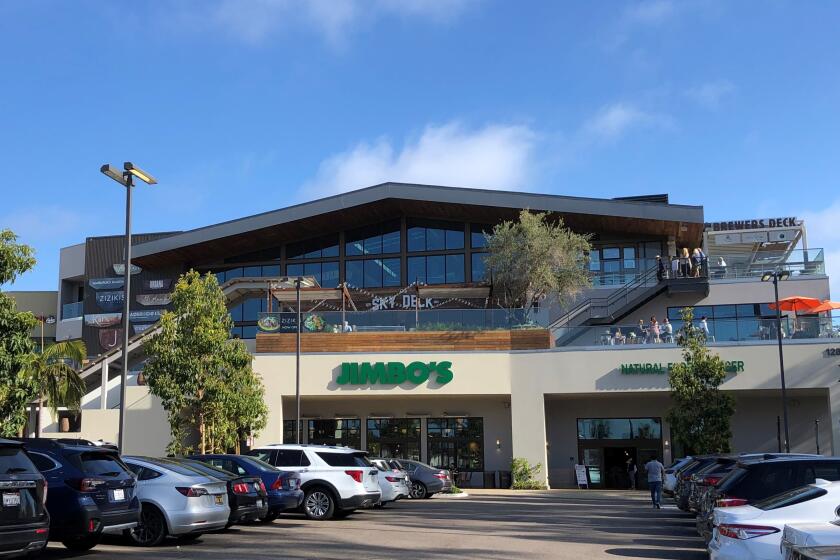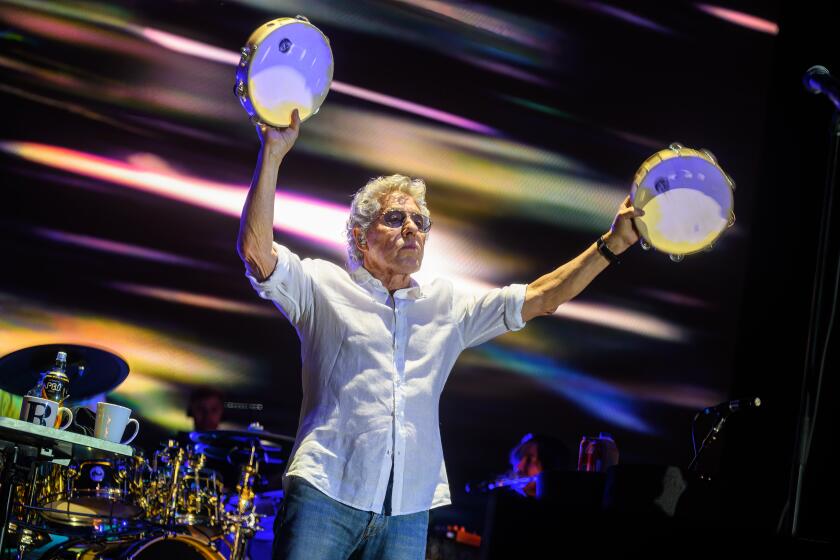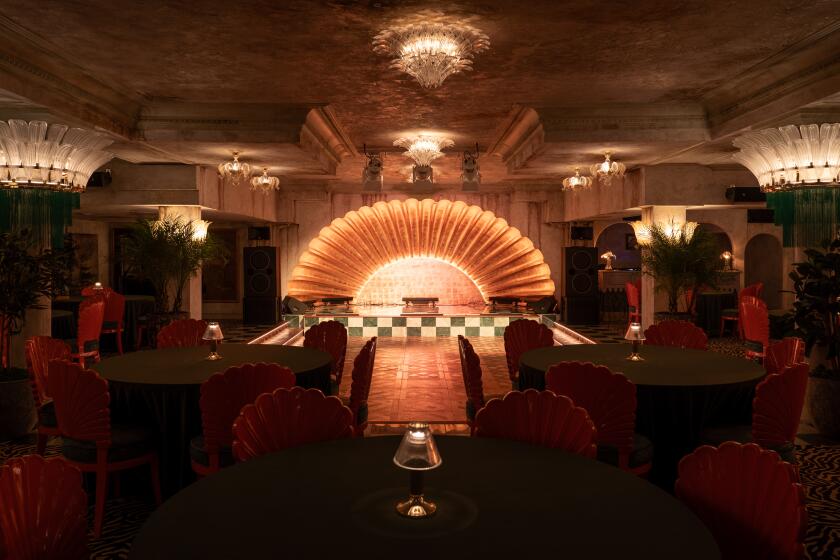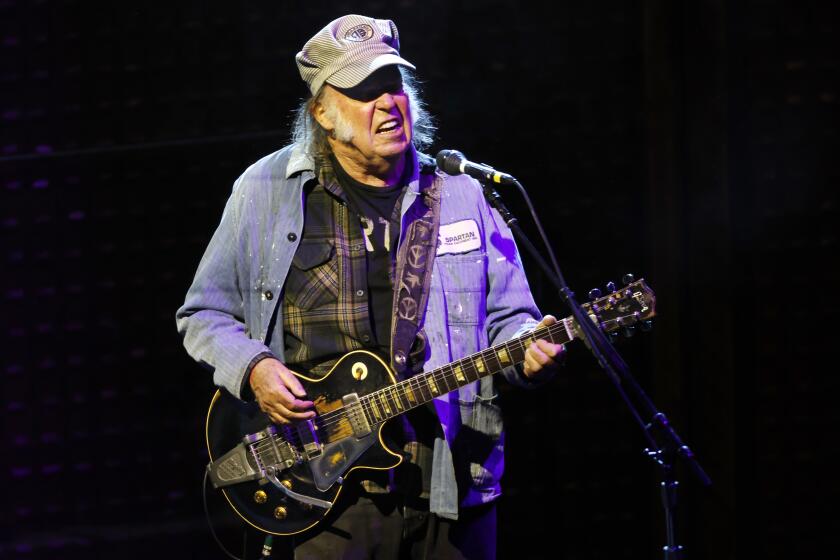Woodstock, 50 years later, a landmark festival and a cautionary tale
The template for Coachella, Lollapalooza, Bonnaroo and many other festivals, the 1969 Woodstock festival was a golden moment for youth culture and the beginning of corporate rock.
The spirit of Woodstock lives on, 50 years after the most famous rock festival ever drew between 400,000 and 500,000 young rock music fans to a farm in upstate New York on a mid-August weekend in 1969.
Together, they made history, overcoming rain, mud and an alarming lack of any infrastructure. They were fueled by a palpable sense of “we-are-one” unity — and performances by nearly three dozen acts, including Jimi Hendrix, Janis Joplin, Santana, the Grateful Dead, Crosby, Stills, Nash & Young, Joan Baez, The Who and Sha Na Na, a young band playing live for only the seventh or eighth time in its career.
“I don’t think anybody that’s a musician is not affected by Woodstock and the musicians who performed there,” said blues-rocking country music star Chris Stapleton, 41.
“There were a lot of great musical and cultural shifts in that moment and we’re all a part of that legacy, just by default. You can’t be playing music and not have been influenced by somebody that was there and performed at Woodstock; it just doesn’t happen.”
Skateboard legend Tony Hawk is equally aware of Woodstock’s impact, even though he was only a year old when the festival took place.
“It was definitely a very perfect storm of musical talent, political movement and unrest,” Hawk, 51, said. “So it was a once in a lifetime experience.”
Those sentiments are shared by two Woodstock veterans — Tijuana-bred guitarist Carlos Santana and Sha Na Na leader John “Jocko” Marcellino, who was just 19 when his band played the festival.
“I tell people Woodstock was the best of times and the worst of times,” said La Jolla resident Marcellino. “All these people cooperated and made what could have been a disaster into a great success. It was the birth of ‘Woodstock Nation’.”
“Woodstock changed my life,” said Santana, 71, whose band became one of the festival’s breakout stars. His ongoing summer concert tour, which included a recent San Diego concert, opens with film footage from the festival.
“Because of Woodstock, I was able to witness firsthand that a mass number of humans can co-exist in harmony,” Santana said.
“The festival took place at the end of a strong, volatile decade in American culture, with the assassinations of Dr. Matin Luther King and John and Robert Kennedy, the mass protests against the war in Vietnam, the police violence in Chicago (outside the 1968 Democratic National Convention), the women’s liberation movement. That was when ‘Woodstock Nation’ was born.”
The Woodstock Music & Art Fair — An Aquarian Exposition was billed as “3 Days of Peace and Music.” It provided the inspiration, directly or indirectly, for Coachella, Lollapalooza, Bonnaroo, KAABOO, Electric Daisy Carnival, England’s Glastonbury, Holland’s Pink Pop, Brazil’s Rock in Rio (which debuted in Las Vegas in 2015 with a $75 million price tag), Japan’s Fuji Rock and scores of other annual festivals around the world.
Plans for a 50th anniversary edition of Woodstock on the weekend of Aug. 16-18, again in upstate New York, were announced in December. The lineup, announced in March, mixes such 1969 Woodstock veterans as Santana, David Crosby and Country Joe McDonald with Jay-Z, Miley Cyrus and Imagine Dragons, whose lead singer, Dan Reynolds, now curates his own annual festival.
But the 2019 anniversary festival’s main investor pulled out this spring and original Woodstock co-promoter Michael Lang has yet to secure a location for the festival or to put tickets on sale. Even if he can find a site at this late date, the chances of selling enough tickets in barely a month does not bode well for Woodstock’s 50th anniversary edition reaching fruition.
Lang also co-produced the 1994 and 1999 anniversary editions of Woodstock. Both suffered from questionable planning and poor execution, with Woodstock ’99 ending with fires, looting and a rampage that resulted in the destruction of an audio tower.
But with or without a festival next month, Woodstock’s 50th anniversary is already being commemorated in multiple ways.
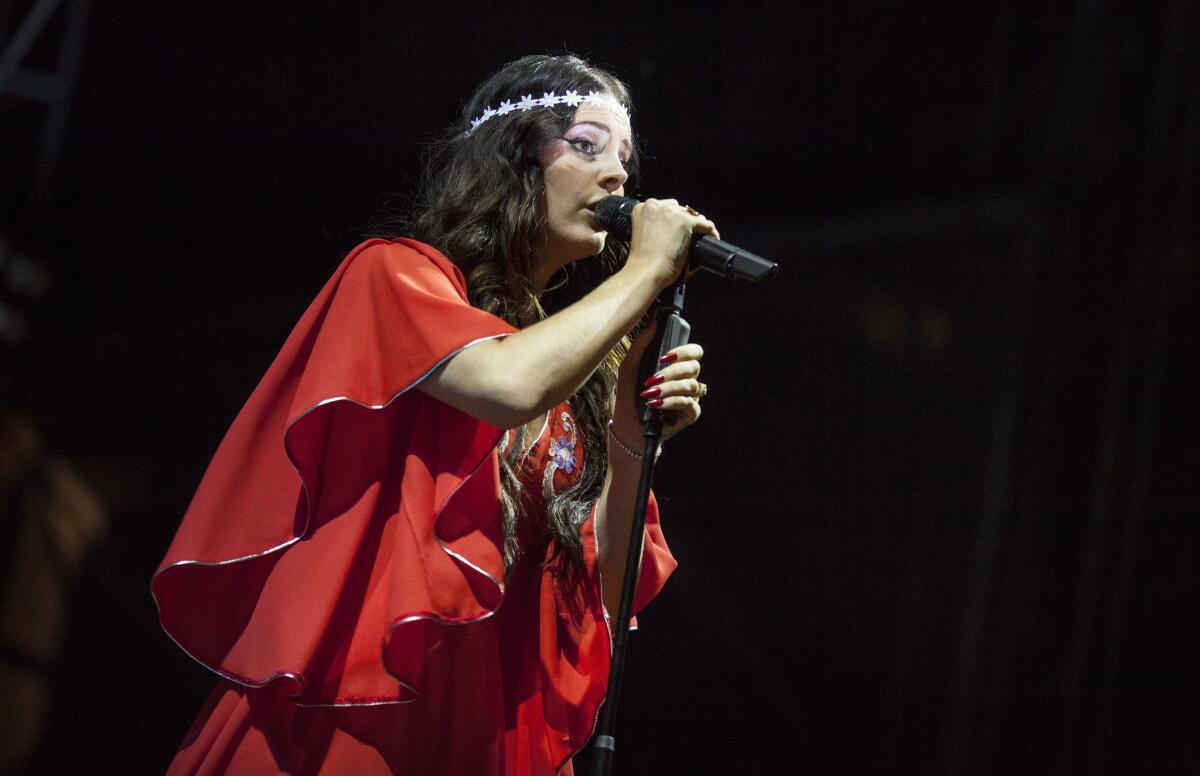
‘Coachella — Woodstock in My Mind’
A slew of books has been published recently. They include “Woodstock: 50 years of Peace and Music”; “Woodstock: A Photographic Look at the Movie that Shook Up the World and Defined a Generation”; “Something’s Happening Here: A Sixties Odyssey from Brooklyn to Woodstock”; “The Story of Woodstock Live”; and the Lang-written “Woodstock: 3 Days of Peace and Music.”
There’s also the new film documentary, “Woodstock: Three Days That Defined a Generation.” And, coming Aug. 2, Rhino Records is releasing “Woodstock — Back to the Garden — The Definitive 50th Anniversary Experience.” It will be available as a 10-CD package, a three-CD package and a five-vinyl album package. For collectors, “Woodstock — Back to the Garden — The Definitive 50th Anniversary Archive” will contain 38 CDs with 432 musical performances in a limited-edition box set of 1,969 copies, each priced at $799.98.
“Woodstock defined a generation in the 1960s and my in-laws were there,” said Deftones’ singer and rhythm guitarist Chino Moreno, 46. “I think of Coachella as more of our generation’s Woodstock.”
So does 34-year-old Lana Del Rey, whose fifth album — 2017’s “Lust for Life” — includes her song “Coachella — Woodstock in My Mind.”
The 1969 festival’s impact is cited by other artists who weren’t born until decades after it took place, including Florence + The Machine’s Florence Welch and Pierce The Veil singer Vic Fuentes. That impact is also cited by artists who performed at the original Woodstock and are still actively making music today, including David Crosby and Graham Nash,
“I’m a child of festivals and the artists who played at Woodstock are still affecting the way I play music,” said Welch, 32, who famously broke her foot jumping off the stage during her 2015 Coachella festival performance.
Fuentes and his San Diego-based band, Pierce The Veil, headlined the 2015 edition of the Vans Warped tour, which in its 24-year run became a sort of traveling Woodstock for punk-rock fans.
“My dad grew up through Woodstock and he kind of embodies that whole hippie positivity mentality, which has definitely been passed on to me,” Fuentes, 36, said. “I used to watch the (extended) DVD of the ‘Woodstock’ movie a lot. Those performances were mind-blowing, especially Santana. Their drummer was only 16 or 17 and watching him put things in perspective for me. I thought: ‘Well, I’m 14; I could be doing that’!”
‘People being kind’
Crosby, Stills, Nash & Young performed at Woodstock for only the second show of their career. The experience — and the mythology it spawned — are still vivid for the now-estranged Crosby and Nash, both 77.
“If everybody was telling the truth about having actually been at Woodstock, it would be nearly everyone on the planet!” Nash said. “And don’t forget, it’s only a three-hour movie. It was a three-day event.”
“The memory that sticks with me,” Crosby said, “kind of epitomizes the feeling that was at Woodstock. There was a very pretty hippie girl walking in mud, barefoot. She cut her foot on glass, badly, and was standing on one leg, bleeding. This New York State Highway Patrol cop, wearing a pressed uniform and shiny shoes walked through the mud and gently and respectfully put her in the back seat of his car, which then got stuck in the mud.
“About 20 hippies were watching and they pushed his car out of the mud. That’s how things should be — him being kind and people being kind to him. I liked that a lot.”
An almost instantly fabled event for the ages — in spite the colossal ineptitude of its young, inexperienced organizers — Woodstock was the subject of an Oscar-winning 1970 film documentary and a hit triple-album soundtrack.
Both had a dramatic international impact, as did the anthem-like Joni Mitchell song, “Woodstock,” which was recorded by Crosby, Stills, Nash & Young.
“Getting into Woodstock and getting featured in the middle of that movie, which was the only (live music) video available back then, everything just took off,” said ex-Santana keyboardist and singer Gregg Rolie, a former Poway resident. “If you had a gig at Woodstock, you had a career.”
The audience that attended Woodstock was predominantly white and middle class. That the vast majority of the festival’s attendees walked in free, without tickets, speaks both to the spirit of the times and the fact the promoters had neglected to install much fencing or even a single ticket turnstile.
“Woodstock was created for promoters to put money in their wallets. They didn’t put up the turnstiles, and the universe walked in and had a party,” Woodstock announcer Wavy Gravy (real name Hugh Romney) recalled in a 1994 Union-Tribune interview.
“I do remember when the turnstiles were almost put up. The promoters asked me to clear the area. And I said: ‘Do you want a good movie or a bad movie?’ And, to their credit, they said: ‘You’re right ...’
It took years for Woodstock’s promoters to recoup their losses. But no matter.
With dizzying speed, the 1969 festival — propelled by the film and album that documented it — re-shaped youth culture, the concert business, the record industry and Madison Avenue.
Even “Peanuts” creator Charles M. Schultz was impacted. After reading a Life magazine article about the festival, he chose Woodstock as the name for the endearing bird character in his popular newspaper cartoon strip. Schultz’s embrace of the festival was just one of the more conspicuous signs of Woodstock being welcomed and appropriated by the mainstream.
“It was a wonderful feeling to be there, so that part of it was great,” Arlo Guthrie said. “But the part about it morphing into an image that could be bought and sold was also true.”
Fellow 1969 Woodstock performers Nash and John Sebastian agreed.
“It didn’t take an idiot to realize that this was an untapped market, and it didn’t take very much time,” Sebastian said. “I was aware that this was showing something to the world that was going to have both positive and negative repercussions.”
“It was the beginning and the ending of something,” Nash agreed.
“It was the ending of a bunch of people getting together in a garage, making music and hoping to make records. And it was the beginning of corporations taking over music. When they saw hundreds of thousands of young people at Woodstock, they saw they could sell extra pairs of sneakers. It was the beginning and the end.”
The beginning of the end may have started just four months later at Altamont, a disastrous free outdoor concert that was held near San Francisco in December 1969. It drew an estimated 300,000 fans to hear the Rolling Stones and such Woodstock veterans as Santana, Jefferson Airplane and Crosby, Stills, Nash & Young.
At the suggestion of the Grateful Dead, the Stones asked members of the Hells Angels to provide security in return for free beer. This resulted in some attendees being beaten bloody, while a young man named Meredith Hunter was pummeled and stabbed to death by some of the Hell’s Angels after he was spotted with a gun near the stage.
Hunter’s death is captured in footage in “Gimme Shelter,” the Oscar-winning 1970 film chronicle of the Stones’ 1969 U.S. tour. The disaster that was Altamont led some to conclude that the Woodstock ethos of love and peace had ended. Others continue to embrace its spirit to this day.
“I think there should be a Woodstock in every city and every park, with grandparents and grandchildren, creating unity and harmony,” declared Carlos Santana.
“Unfortunately, it takes catastrophic events to make human beings wake up. But we don’t need a catastrophic event to realize that that we don’t need flags, borders, ‘patriotism’ or politicians. We don’t need anything. Because we can just share, like at Woodstock, where people shared their blankets, their food and their spirit.
“This may sound like ‘Kumbaya’ to a lot of people. But this kind of ‘Kumbaya’ will always kick your ass.”
Get U-T Arts & Culture on Thursdays
A San Diego insider’s look at what talented artists are bringing to the stage, screen, galleries and more.
You may occasionally receive promotional content from the San Diego Union-Tribune.

